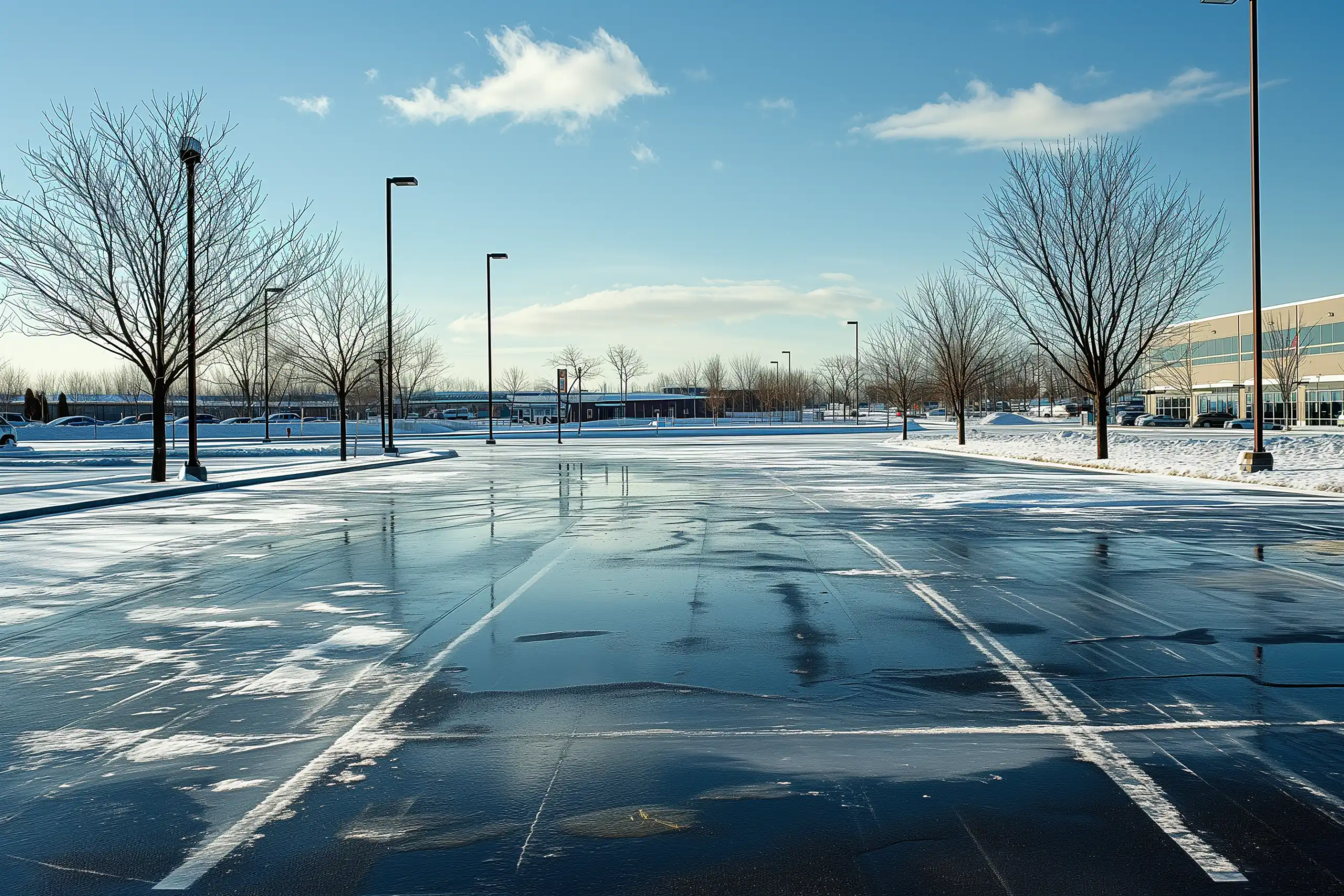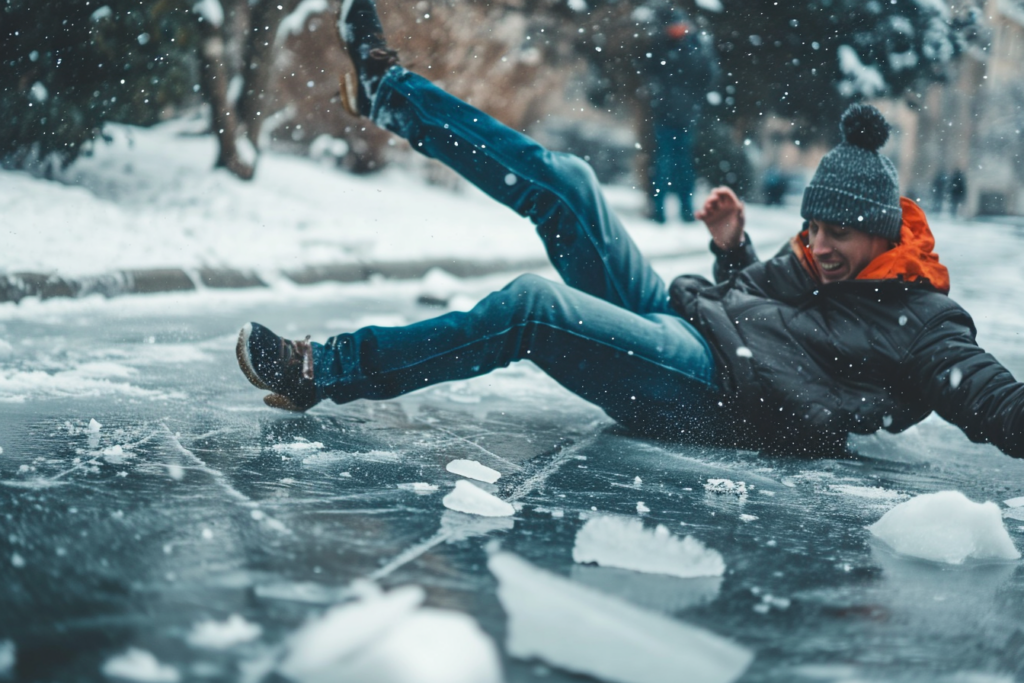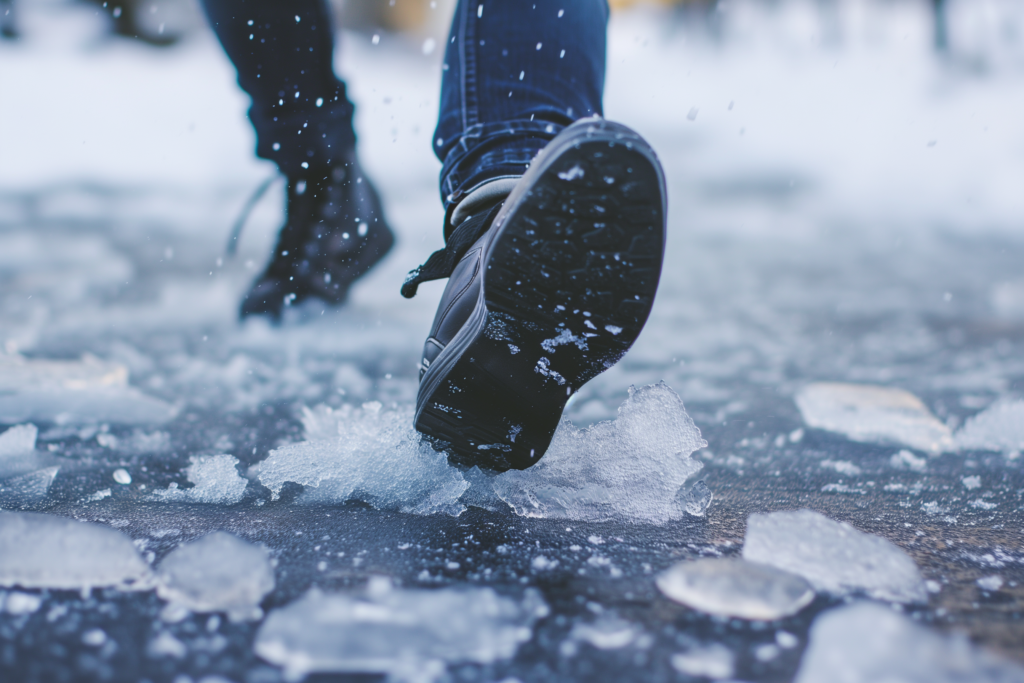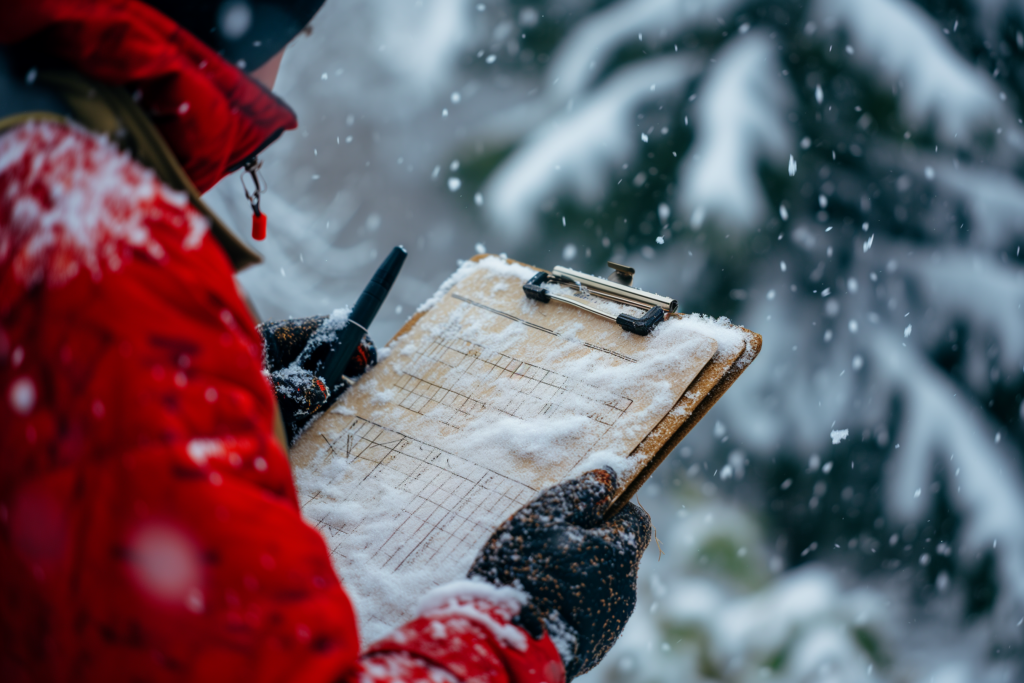
As winter’s cold grip tightens around the nation, it’s time for snow removal providers to gear up for the crucial task of keeping business operations smooth and pathways safe. The snow removal industry, with a market value exceeding $19 billion, is not just about clearing the white stuff—it’s a competitive field where precision and efficiency can set you apart. In this Snow & Ice America feature, we focus on 7 essential factors to consider regarding liability in ice management and control, providing indispensable advice for snow removal businesses striving for excellence. From utilizing cutting-edge weather prediction technology to stay ahead of storms, to adopting sustainable deicing methods that safeguard the environment and your profits, we’re shedding light on what makes a leader in the snow removal sector. Stay ahead of winter challenges and ensure your clients’ properties are free from ice hazards with the insights from our latest industry analysis.
Assessing Duty of Care
In the world of property management, the onset of winter weather brings not just a drop in temperature, but a rise in responsibility. For those at the helm of property oversight, there is a non-negotiable duty of care that must be executed with precision and foresight. The cornerstone of this obligation is the development and implementation of rigorous snow and ice removal protocols, designed to avert the all-too-common slip and fall scenarios that winter brings.
To stand on firm ground in the face of liability claims, property stewards must adopt a meticulously systematic approach, grounded in evidence and best practices. The meticulous review of maintenance logs, incident documentation, and adherence to regional safety standards is critical in establishing a robust defense should an accident occur. It’s not merely about being reactive; it’s about being proactive with a well-orchestrated plan before the first flake falls.

In the event of litigation, the details matter. Site inspections, coupled with causation analysis, are dissected with exacting scrutiny. Thus, engaging with forensic experts, such as seasoned CED engineers, becomes indispensable. Their expert evaluations dissect each incident with precision and provide an objective viewpoint that often becomes the fulcrum of a liability claim. Their technical insights can validate the sufficiency of snow removal strategies or highlight lapses that might point to negligence.
Let us not forget the lessons from landmark cases such as WRO/Trump, where the defense’s anticipation of risk assumptions played a pivotal role in the outcome. It underscores the imperative for property owners not just to exercise due diligence, but to armor their legal strategies with foresight and comprehensive risk assessment.
In the end, the commitment to rigorous winter weather preparation transcends legal liability. It is a manifestation of the underlying ethos of property management: to safeguard the well-being of each individual who steps foot on your premises. As winter’s chill sets in, it is this proactive, informed, and diligent approach that will define the prudent property owner in the eyes of the law – and in the court of public opinion.
Documenting Weather Conditions
Understanding the critical role of detailed weather logging cannot be overstated, especially when it comes to the high stakes of ice control liability cases. With precise and accurate records of meteorological conditions—temperatures down to the degree, the exact volume of snowfall or rainfall—your incident reports gain an edge of irrefutable authority. It’s this meticulous attention to detail in documenting the capricious nature of weather that lends weight to your analysis, either buttressing or challenging liability claims. In the courtroom, where the veracity of every statement is under scrutiny, a well-maintained weather log can be the linchpin for a successful defense or the key piece of evidence for a persuasive argument.

Weather Log Importance
In the realm of liability assessment, the role of a meticulously maintained weather log is paramount, particularly when dissecting the complex factors that lead to slip and fall incidents. A comprehensive weather log stands as an indispensable piece of evidence, eloquently articulating the exact meteorological conditions at the time of an event. Such records are the linchpin in the evaluation of ice control liability, providing a robust foundation on which to either corroborate or contest allegations of negligence in maintaining pedestrian thoroughfares.
Precision in these logs is more than mere due diligence; it is a reflection of an entity’s commitment to safety and proactive risk management, revealing the efficacy with which snow and ice removal operations were executed, as well as the foresight applied to predict and counteract the challenges posed by freeze-thaw cycles. The import of the weather log transcends its evidentiary value in the courtroom; it is a strategic tool of inestimable worth, informing and refining protocols for confronting the vicissitudes of winter weather. Such vigilance is not only a legal shield but a moral compass, guiding us toward the creation of environments secure against the caprices of nature, for the benefit of all who traverse them.
Accurate Condition Reporting
For snow removal providers, the importance of detailed condition reporting cannot be overstated, particularly during the challenging winter months. In the snow removal business, maintaining an accurate record of weather-related hazards is not only a best practice—it’s essential for legal protection against frequent snow and ice slip-and-fall lawsuits. Transforming a standard property check into a strategic tool is key. By meticulously recording every detail, from individual snowflakes to treacherous ice patches, you’re not just fulfilling a task; you’re building a story of proactive safety and thorough management. These records are crucial; they not only guide prompt action to remove snow and ice but also act as persuasive evidence of your diligent snow removal processes if legal proof of your proactive measures is required. Ultimately, as temperatures plummet, the significance of precise, on-time reporting for snow removal services increases, providing a transparent look at the effectiveness of your hazard control methods.
Evaluating Ice Control Methods
In the realm of ice control management, the difference between a clear path and a treacherous slip can hinge on the foresight employed in preemptive strategies. Industry savants recognize the importance of pre-treatment measures, like the application of Rock Salt, to thwart the fusion of ice to pavement, thereby enhancing the efficiency of subsequent de-icing efforts.
It’s not merely about the deployment of materials, however. The astuteness to set precise thresholds for snowfall intervention—tailored to the unique contours and climate history of each locale—is what distinguishes a proactive from a reactive approach. Regular patrols of pedestrian areas are not just recommended; they are the linchpin in a dynamic response system that mitigates the peril of slips and falls, thus attenuating potential ice control culpability.
In the intricate dance of liability evaluation, the expertise of forensic engineers becomes invaluable. Their rigorous methodologies, including the precision mapping of an incident site, yield an authoritative dissection of environmental conditions. Armed with tangible artifacts like photographic evidence and video recordings, these experts distill clarity from the chaos of accident sites.
When it comes to navigating the icy minefield of slip and fall litigations, the delineation of natural versus unnatural snow and ice accumulation is pivotal. It’s this discernment that forms the cornerstone of liability judgment. Engaging with seasoned professionals, who bring a nuanced understanding of ice control best practices, is crucial for a comprehensive and accurate liability determination.
A sterling ice control protocol, meticulously documented and executed in alignment with industry best practices, is more than a procedural necessity—it’s a bulwark against the legal storms that may arise. Such documentation is the tangible proof of diligent care, a testament to the lengths taken to safeguard against the wintry hazards that nature indiscriminately lays at our feet.
Incident Reporting Protocols
In the fast-paced world of incident response, the adage ‘time is of the essence’ couldn’t be more pertinent. Leaders in the field understand that the swift filing of incident reports is paramount in capturing the granular details that paint the full picture of any slip and fall occurrence. But it’s not just about speed – it’s about precision. Knowing the intricacies of the reporting chain is like having a roadmap to clear accountability and efficiency. Moreover, the modern approach to evidence preservation – think high-resolution photographs of the scene and securing witness accounts like a seasoned detective – is not just a procedural step; it’s the bedrock of building an irrefutable case and dissecting liability with surgical accuracy. In today’s liability landscape, these practices are not just recommended; they’re the benchmark for excellence.

Timely Incident Documentation
Establishing a comprehensive incident reporting protocol is essential for capturing critical details immediately following a slip and fall event. When an accident occurs, timely incident documentation not only preserves key evidence but also aids in the meticulous analysis of injury liability. You must ensure that witness statements are gathered and photographs of the site are taken swiftly to record the exact conditions that contributed to the slip and fall accident.
Precisely documenting weather conditions at the time of the incident is also crucial, as this information can distinguish between natural and unnatural ice accumulations. Moreover, swift collection and thorough examination of incident reports and medical records are indispensable for an accurate evaluation of the cause and potential liability in the slip and fall case.
Reporting Chain Clarity
In the high-stakes world of property management, a slip and fall can escalate from a simple mishap to a legal quagmire in a heartbeat. That’s why savvy property owners understand the non-negotiable necessity of a crystal-clear incident reporting protocol. Picture this: a winter wonderland swiftly becomes a liability landscape as ice and snow lay the groundwork for potential accidents. Here, precision is paramount; a meticulously crafted reporting chain is the linchpin for delivering prompt medical assistance while meticulously documenting the nuances of snow removal efforts.
When a claim materializes, the clarity of this process becomes the cornerstone of your defense. It empowers engineering gurus to dissect the incident with laser focus, ensuring that every minute detail is scrutinized. Such a robust protocol is more than a mere procedural formality—it’s a strategic bulwark that deftly identifies fault, anchors liability, and shields property owners from the murky waters of ambiguous claims. This is the art of transforming a reactive necessity into a proactive asset, and it’s what sets the industry’s gold standard for fair liability evaluation. In the unforgiving theatre of property incidents, clarity is not just king—it’s the guardian of your legal and financial fortress.
Evidence Preservation Methods
In the wake of a slip-and-fall event against the treacherous backdrop of a snowy landscape, the prompt and precise securing of the scene morphs into a crucial endeavor. It is a dance of urgency and meticulous care, where each step from photographing the icy tableau to charting the meteorological mood swings, becomes part of a strategic ballet to crystalize the narrative of the incident. As witnesses weave their accounts, every statement is a thread in the tapestry of truth. The exact coordinates of the mishap are not merely marked but enshrined, and any vigilant eyes in the sky – think surveillance footage – are requisitioned to replay the moment of misstep. Time itself is frozen in logs, and the authorities become the custodians of this stark chronicle. This methodical orchestration of evidence preservation not only echoes the acumen of an industry virtuoso, but it also lays the groundwork for an unassailable ledger, a cornerstone for the edifice of legal and insurance scrutiny that inevitably rises from the snow’s deceptive serenity.
Determining Negligence Standards
In the intricate dance of determining fault in ice-related mishaps, the line between natural and man-made hazards is razor-thin yet crucial. It’s a distinction that doesn’t just add a layer of complexity to personal injury claims—it’s the bedrock upon which cases are built or broken. An accumulation of snow and ice might appear innocuous, but the expertise of seasoned engineers becomes invaluable as they dissect the elements, distinguishing an act of nature from a preventable hazard.
Consider the scenario where a faulty gutter channels melted snow onto a pathway, only for it to re-freeze and set the stage for a fall. This isn’t just an unfortunate incident; it’s a textbook example of an unnatural accumulation where liability looms large. In the realm of ice control liability evaluation, such details are dissected with a fine-tooth comb.
To navigate the slippery slope of causation in slip and fall cases, one must become a sleuth of the snow, piecing together a timeline of weather events, scrutinizing the fine print of snow removal contracts, and dissecting the lay of the land. These are not just steps; they are the very pillars that support a robust defense or an irrefutable argument of negligence. For example, a snow removal contractor who misses the deadline detailed in their agreement doesn’t just drop the ball—they potentially pave the way for a lawsuit.
In this frosty legal landscape, the stakes are as high as the snowdrifts, and the diligence of property owners and contractors must be equally towering. After all, when it comes to preventing winter woes, it’s not merely the thought that counts—it’s the timely and effective action that truly makes the difference.
Analyzing Injury Claims
In the intricate dance between liability and due diligence, engineering experts shine a spotlight on the critical details of slip and fall injury claims. With an approach as precise as a surgeon’s scalpel, they dissect the evidence, inspect sites with a detective’s eye, and rigorously examine causation. The battleground of snow and ice accidents, notorious for their litigation labyrinth, hinges on the exact environmental conditions at the moment of mishap. CED engineers, armed with a meticulous methodology, reconstruct the scene with forensic clarity, drawing on weather reports, maintenance logs, and eyewitness accounts.
For stakeholders like property owners, managers, and insurance firms, grasping the nuances of such analyses is paramount. The revelations unearthed by a comprehensive probe can pinpoint oversights in snow and ice management, shining a light on where fault truly lies. This isn’t just about assigning blame—it’s about the monetary marrow of the matter: covering medical costs and recouping lost wages.
Enter the realm of engineering excellence, where a distinguished firm’s scrutinizing gaze can differentiate between a legitimate claim and one that’s inflated. These seasoned professionals excel at identifying where standard procedures fell by the wayside, potentially unmasking negligence. Their meticulous documentation arms you with the evidence needed to navigate the treacherous waters of liability or to mount a robust defense against outsized accusations.
Insurance companies, in particular, are vested in these expert evaluations—sifting through claims with a fine-toothed comb to unearth the truth. Such expertise is the compass that guides them through the murky waters of settlement negotiations or the decision to stand firm in the courtroom. An unerring liability assessment is the shield against baseless claims and the sword that cuts financial losses.
Navigating the complexities of injury claims requires more than just a keen eye—it demands the discerning expertise of engineering specialists to ensure that each case reaches a resolution that’s not only fair but informed by the highest industry standards.
Reviewing Insurance Coverage
Navigating the icy terrain of winter liabilities requires a keen understanding of your insurance armor. It’s not just about having a policy; it’s about knowing the intricacies of coverages like bodily injury liability and property damage liability—your financial shields against the treacherous winter pitfalls, such as the infamous NY Slip incidents.
Dive into the fine print and ensure your insurance extends its protective arm to cover medical payments and collision incidents, for when your vehicle performs an unintended pirouette on ice and greets another car or static object. Be mindful, these slip-ups, sans police tickets, are often deemed at-fault by insurers, potentially sending your claims and premiums into a chilling ascent.
Don’t let a post-skid tow and recovery bill catch you off guard. Verify the scope of your policy, because after an icy encounter, the last ordeal you need is an unexpected financial frostbite. Mastery over the claim filing sequence is crucial, too—filing with precision can mean the difference between swift reimbursement and a cold financial hangover.
Property owners, heed this: The liability doesn’t end at your doorstep. The mantle of responsibility includes ensuring your domain is clear of snow and ice, a preventative gesture that not only spares accidents but also shields you from potential liability claims. Make certain your insurance is robust enough to warm you against the icy grip of negligence claims.